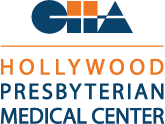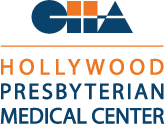Glaucoma is the second-leading cause of blindness worldwide, and its prevalence is increasing. Because glaucoma is a serious and chronic condition, it is important for patients to have access to reliable care that is effective over the long term. Left untreated, glaucoma can lead to blindness.
It is an expensive condition in terms of direct monetary costs as well as indirect costs in the form of lost societal productivity, diminished earning power and quality of life for affected individuals and their families. Unfortunately, many glaucoma therapies come with a hefty price tag, which may put them out of reach for patients with limited budgets.
However, public education and advocacy efforts may help reduce costs. Here are five things to know about the cost of glaucoma treatment.
1. Glaucoma treatment can be costly.
According to the publication EyeWorld, statistics for the year 2014 showed that direct medical care costs for glaucoma stood at close to $3 billion annually in the United States alone. A 2014 article appearing in Glaucoma Today noted that the average direct cost of treatment for patients in the early stages of the disease was approximately $600 annually. Patients with end-stage glaucoma paid just over $2,500 annually.
Similarly, according to the nonprofit organization Prevent Blindness, in 2013 the annual estimated direct costs related to glaucoma and other optic nerve disorders reached $5.8 billion in the United States. The group stated that the individual yearly per-patient cost was close to $2,200.
2. The cost of glaucoma varies by treatment type and location.
In September 2018, MD Magazine published an analysis of research into the rising costs of various glaucoma treatments. The publication reported treatment costs for glaucoma are a significant portion of the median annual household income (MA-HHI) for large numbers of patients around the world.
The research study cited by MD Magazine was led by physicians at the Kellogg Eye Center of the University of Michigan and originally published in JAMA Ophthalmology. The observational, cross-sectional study compared the costs of three different kinds of treatments.
The first type of treatment examined was topical treatment. The second treatment examined was a procedure known as a trabeculectomy. The third treatment examined was a procedure called a laser trabeculoplasty, also referred to as an LTP. The researchers compared the costs of these treatments with MA-HHI in close to 40 countries.
Treatments costing 2.5 percent of MA-HHI or less were considered affordable. The researchers noted a significant variability in pricing of glaucoma treatments as compared with MA-HHI in both developed and developing countries. Overall, the price of glaucoma treatment for surgical, laser and topical modalities exceeded 2.5 percent of MA-HHI for a large number of patients worldwide.
The most affordable treatment studied, a topical medication known as timolol, was 2.5 percent or less of MA-HHI in all but two countries. Significant pricing variability was observed for a trabeculectomy, which cost between 0.3 percent and 42 percent of MA-HHI, and for a laser trabeculoplasty, which cost between 0.2 percent and 17 percent. Trabeculectomy was the most expensive treatment in almost 80 percent of the countries studied.
3. The number of individuals affected by glaucoma is increasing.
The organization Prevent Blindness expressed concern about the public health implications of an aging American population. Glaucoma tends to affect adults in their middle and senior years. Already some 2.7 million people in the US have been diagnosed with primary open-angle glaucoma.
4. Glaucoma also negatively impacts an individual’s quality of life.
According to EyeWorld, glaucoma is costly both in terms of direct financial burden as well as through the toll it takes on patients’ quality of life. Many patients with glaucoma lose the ability to see well enough to drive, to work for a living, or even to administer their own topical eye medications. And when individuals experience such reduced outward quality of life, they can become increasingly isolated and depressed.
5. Glaucoma education and advocacy are key to lowering costs.
There is another significant conclusion suggested by the research. Public health education programs, designed to raise glaucoma awareness and the need for prompt, adequate treatment, are the best weapons in fighting the disease and, ultimately, in lowering costs.
Competition is fierce for funding among researchers dealing with a range of diseases, and glaucoma is one among many. This is the reason advocates for people with glaucoma continue to do everything in their power to bring the serious nature of the disease to the forefront of policymakers’ awareness.
 ENGLISH
ENGLISH  РУССКИЙ
РУССКИЙ 


